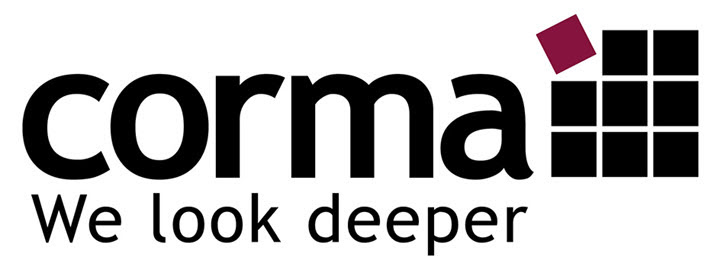In today’s digital age where data can be found and accessed almost anywhere, open-source intelligence remains to be a powerful tool for gathering valuable insights. But as the popularity of OSINT grows, so do the legal and ethical concerns surrounding its use.
The big question is, is OSINT legal? While OSINT is generally legal, there are important ethical and legal considerations to consider. Some countries have specific laws and regulations around open-source intelligence, and using OSINT to access restricted or private information can be illegal. It’s essential to consult legal experts and follow best practices to ensure that your use of OSINT is lawful and ethical.
This article will discuss what OSINT is, how it is often used, its legality and ethics, and the best practices to ensure you comply with data privacy rules and regulations.
What is OSINT?
Open-source intelligence (OSINT) refers to information derived from public sources. While it is often used interchangeably with internet investigations that involve data gathering in the online space, OSINT is a broader term that includes both online and offline data.
In general, OSINT data sources include:
- traditional mass media (newspapers, radio, television, magazines)
- anything published on the internet (social media, blogs, forums, online databases)
- corporate data accessible to the public (financial statements, company information)
- government information (court cases, public hearings, public records)
- conferences and seminars
- academic articles, journals, theses, dissertations, studies
- photographs
- geospatial information
What is OSINT Used for?
Open-source intelligence (OSINT) has emerged as a powerful tool for businesses across industries looking to enhance their intelligence and investigation efforts. Experts here at corma have explored the numerous applications of OSINT that can help companies achieve their goals and secure their assets effectively.
Cybersecurity
Cybersecurity has become a top concern for companies across industries. Through the effective use of OSINT, organizations can detect data breaches, manage threats, and identify instances of fraudulence. By monitoring publicly available information, enterprises can remain vigilant about potential risks to their digital infrastructure, including threats from the dark web.
Online Reputation Management
Another useful application of OSINT is online reputation management. Businesses can identify negative comments or reviews and address them proactively by keeping track of discussions on online review sites, social media, and other platforms. This timely response helps protect a company’s reputation and prevents minor issues from escalating into public relations crises.
Executive Protection
Using OSINT tools and resources, security teams can provide timely warnings and take necessary precautions to ensure the safety of high-profile individuals and executives. Experts can actively monitor and analyze various sources of information to identify and assess potential threats. This includes closely tracking social media activities, news articles, and other relevant sources that may reveal early signs of emerging security risks.
Crisis Response
Through strategically utilizing OSINT tools and resources, businesses can effectively detect and promptly respond to potential security breaches and data leaks. This proactive approach minimizes the detrimental impact of data breaches and safeguards the organization’s esteemed reputation, sensitive information, and the invaluable trust bestowed upon it by its clientele.
Internet and Social Media Investigations
OSINT can prove invaluable in uncovering potential intellectual property theft, fraud, or corporate crime. These techniques are employed to locate and stamp out counterfeit products on online marketplaces or identify false social media profiles that could harm a company’s reputation.
Additionally, OSINT can aid in exposing covert relationships and connections between individuals, which may shed light on cases involving insider threats or collusion.
Is OSINT Legal or Illegal?
The short answer is yes, conducting OSINT investigations is legal as it involves publicly available information. However, there are certain laws, guidelines, and elements that must be considered depending on your location to ensure that the investigation remains ethical and is not breaking any laws.
General Data Protection Regulation (GDPR)
Various regulations govern OSINT practices in Europe, and the most notable law that comes to mind is the General Data Protection Regulation (GDPR).
The EU GDPR is the most robust privacy and security law globally. It was adopted in 2016 to update and modernize the 1995 data protection directive principles and came into effect on May 25, 2018.
GDPR primarily focuses on individuals’ fundamental rights in the digital age, the obligations of those processing data, methods for ensuring compliance, and sanctions for those who breach the rules.
When conducting OSINT operations within Europe, practitioners must adhere to the guidelines established by the GDPR regarding collecting and processing personal data. This entails ensuring that data collection is conducted lawfully, transparently, and limited to what is necessary for a specific purpose.
For example, an investigator executing a background check on a potential employee must ensure that they only collect information relevant to the job position and obtain explicit consent when required. Moreover, individuals possess the right to access, correct, or delete their personal data held by organizations. By adhering to these principles, OSINT practitioners in Europe fulfill their legal obligations under the GDPR, cultivating an environment that respects individuals’ privacy rights and promotes trust.
Furthermore, GDPR has implications beyond Europe, as businesses worldwide dealing with EU citizens’ data must also comply with the regulation. The law requires global companies to adapt their data handling practices per GDPR guidelines, including their OSINT activities.
The GDPR plays a crucial role in shaping OSINT practices in Europe and beyond, ensuring that data privacy and security are maintained while enabling investigators to gather valuable insights from publicly available sources.
Admissibility in Court
Just because the information collected through OSINT is considered legal does not automatically translate to admissible evidence in litigation.
The court will also consider the following:
- source of the evidence
- the authenticity of the evidence
- anonymity or not of the sources
- the protection of the witnesses and victims
- compliance with legislation
Another consideration is the legality of the OSINT software used to derive the information. In essence, using the software should not lead to the commission of criminal law offenses. Furthermore, the OSINT tool should comply with the rules applicable to the investigator and should be in compliance with the GDPR and the laws of the country where it is being used.
Legitimate Cause
For OSINT investigations in Germany, the person carrying out the investigation, such as the OSINT analyst or private investigator, must have a “legitimate interest” to do so — that is, a reason justified by the situation and presentable in a coherent, consistent, and plausible manner. This should be properly documented, signed by the client, and verified by an attorney.
Other Areas of Concern
Legal compliance is just one of the concerns in OSINT data gathering. Just because a person is not prohibited from doing something does not mean they should commit the act. There are ethical dilemmas to think about as well.
For instance, you should also think about the consequences of publicizing unclassified but sensitive information. If an individual or group gets hurt when the information is disclosed widely, what trade-offs can be made?
Another consideration is the over-reliance on automated analysis. While algorithms and machine learning can speed up OSINT data gathering, the resulting analyses can also have detrimental consequences if they turn out to be wrong. There should be a balance between machine and human analyses.
Ethical and Legal OSINT Best Practices
When conducting OSINT activities, following ethical and legal practices is crucial to ensure compliance with regulations and maintain a professional reputation. Here are the best practices to consider when practicing OSINT:
- Review terms of service: Familiarize yourself with the terms of service for the websites you access to ensure adherence to your legal obligations.
- Use fake identities cautiously: Creating fake identities is allowed, but do not claim a special status (e.g., government official) or impersonate someone without consent.
- Avoid hacking: Do not exploit vulnerabilities or engage in hacking activities to access data; illegal actions can result in prosecution despite good intentions.
- Consider risks before communication: Avoid communicating with others on the dark web unless you have carefully assessed the potential risks and outcomes.
- Do not share crime-related information: Refrain from sharing data that could be used to commit a crime and exercise caution when interacting on the dark web.
- Avoid illegal transactions: Do not purchase stolen data or criminal tools or engage in transactions with cybercriminals without thoroughly considering the legal implications.
- Maintain records: Keep records, such as screenshots, to serve as an audit trail in case law officials investigate your cybersecurity team’s activities.
- Securely store collected data: Implement robust security measures to protect the data you collect and store, preventing unauthorized access and lowering the risk of data breaches.
- Develop organizational guidelines: Create detailed guidelines for your organization’s cybersecurity intelligence gathering, considering corporate interests, legal obligations, and the terms of service of the sites you use.
- Verify information accuracy: Ensure that the information collected is accurate and up-to-date to prevent drawing incorrect conclusions or making misleading claims.
- Maintain transparency: When appropriate, disclose the purpose of your investigation and the methods used to collect information to maintain transparency in your OSINT activities.
Conclusion
OSINT has revolutionized how investigators gather information and have become a vital tool for professionals in the cybersecurity industry. But as the internet evolves, so must our approach to OSINT. Cybersecurity professionals should adhere to the best practices established by laws and organizations worldwide to ensure they use OSINT legally.
At corma, we understand the risks and benefits of OSINT and are committed to using these tools professionally and ethically. This way, we can legally protect our clients from cyber threats and maintain a secure online environment.








